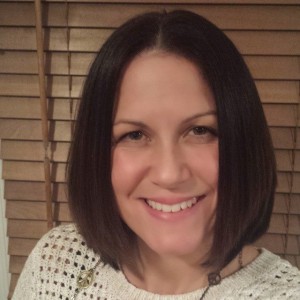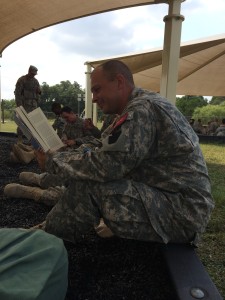I am happy to present the first article on my site by someone other than me. For a long time, I’ve thought about the importance of offering up other voices and perspectives. I have known Regina Diamond-Rodriguez for several years and am extremely impressed and proud of her. I reached out to her a few months ago and asked her to write her story.
Regina abused drugs and went to prison. She eventually got clean, attended Rutgers and transformed her life. Her story appears below. It’s timely, as President Obama came to Newark, NJ this past Monday and celebrated the drug treatment that is offered at Integrity House and the criminal justice reforms that have been pushed by professionals at Rutgers Newark (I am a proud former employee of both). Here are a few questions that I want you to think about as you read her story:
(1) What kind of support was available at critical times? Is this institutional support or purely personal (family & friends)? Are both necessary? (2) Could that support/opportunities/encouragement have made a difference if it had been there earlier? or in a different form? (3) Are there flaws or impediments in the available social services that impede the success?
__________________________________________________________
Regina Diamond-Rodriguez, LSW, MSW
 I had a typical happy New Jersey childhood. As a child, I played softball and basketball. I loved going camping and spending my summers at the beach. I have loving parents, who did the best they could. Despite my happy childhood and loving parents, I began to feel like an outsider in my early teens. I developed a smart mouth and a rebellious attitude. I felt insecure and angry most of the time. I tried alcohol at the age of 14 and attempted suicide at 15. I was regularly smoking marijuana at 17, and I eventually tried a number of drugs soon after that. I was arrested for possession and being under the influence of LSD at 18; instead of jail, I was hospitalized. I received pre-trial intervention (PTI) and the charges were eventually dismissed. For the next six years I was in and out of therapy and outpatient rehabs, but somehow managed to get decent jobs. I even became a licensed broker’s assistant (obtaining the Series 7 license); however, my life was unstable and I couldn’t hold a job for more than nine months.
I had a typical happy New Jersey childhood. As a child, I played softball and basketball. I loved going camping and spending my summers at the beach. I have loving parents, who did the best they could. Despite my happy childhood and loving parents, I began to feel like an outsider in my early teens. I developed a smart mouth and a rebellious attitude. I felt insecure and angry most of the time. I tried alcohol at the age of 14 and attempted suicide at 15. I was regularly smoking marijuana at 17, and I eventually tried a number of drugs soon after that. I was arrested for possession and being under the influence of LSD at 18; instead of jail, I was hospitalized. I received pre-trial intervention (PTI) and the charges were eventually dismissed. For the next six years I was in and out of therapy and outpatient rehabs, but somehow managed to get decent jobs. I even became a licensed broker’s assistant (obtaining the Series 7 license); however, my life was unstable and I couldn’t hold a job for more than nine months.
In 2003, at the age of 25, I was in the grips of a near-fatal drug and alcohol addiction. I was unable to maintain employment, healthy relationships, or housing — any semblance of a functioning life. I became unemployed, homeless, and had few friends. I felt so lost and alone. Drugs were the only thing that made me feel ok, and it was always just temporary. As my life spiraled downward, my substance use increased. I was arrested for possession of drugs and credit card theft. I spent a few weeks in the county jail and was homeless upon my release. In a moment of drug-induced desperation, I robbed a small store. I went armed with a water gun, demanded money, and ran out with cash in hand. The police were called and I was arrested within an hour of committing the crime. I spent five months in the county jail before I received my first offer for a plea deal: 15 years in state prison. I eventually agreed to a five to ten year sentence with a mandatory 85% and five years parole upon completing the sentence. The final deal would be determined by the judge on sentencing day.
I knew I had to get sober. During the time I was out on bail, I successfully completed detox, a 28-day inpatient program, and ten months in a halfway house. I attended hundreds of Alcoholics Anonymous meetings, got a sponsor and worked the 12 steps. I was inspired by the laughter in those rooms and the stories of redemption. It was difficult though, especially because no matter how well I did I would still be going to prison. I never wanted to live the way I was living when I committed those crimes – desperate and alone, a slave to my addiction. I hurt so many people while I was active in my addiction, including my family, my friends, myself and the victims of my crimes. I cringed with shame whenever I thought about it.
Sentencing day was August 5, 2005. The courtroom was packed with family and friends. I was sentenced to five years in prison. Tears filled the courtroom, and my mother had to be escorted out because she couldn’t stand up. I ached to see her like that. And then the five year sentence hit me, and I could not imagine how I would survive the next four and a half years.
After the shock and grief passed, I decided that I must stay focused, continue working a 12 step program, and obtain a college education. I was moved from county jail to Edna Mahan Correctional Facility for women. After a few months of settling in and searching for productive things to do, I came across a sign-up sheet for a college math class. I enthusiastically signed up. I relished the idea of taking some college courses while I was incarcerated. I could begin to turn my life around while I was locked up. I was devastated to learn that college level courses were only offered to women under the age of 26, and I had just turned 27. I was angry and hurt and confused. The time seemed to stretch on forever. I spent two years in the maximum security and found very few ways to improve my life. I played handball and cards, learned how to cross-stich and cook. The AA and NA meetings were inmate-led and were nothing like the meetings I was accustomed to on the outside. I was on the brink of despair. But I didn’t use.
In 2007 I was moved to minimum security and to a behavior modification program within the prison. I struggled in this program; the model was confrontational and punitive. I was already sober for nearly three years and had the experience of getting sober in a supportive and nurturing environment. I managed to get through the program and was moved to a halfway house in 2008.
While in the halfway house, I took some basic computer skills training. The class was run by a woman who also worked at the local community college. She and Mr. Fletcher, the Director of Education at the halfway house, suggested that I register for classes through the Next Step Program at Essex County College (ECC). I was excited at the thought of this new opportunity. Mr. Fletcher introduced me to Dr. Roden, a history professor at Rutgers. Dr. Roden came to meet with me at the halfway house and told me about the Mountainview Program, which consisted of a small group of formerly incarcerated students who were registered on the Rutgers New Brunswick campus. He suggested that I get a few semesters under my belt at community college, and then apply to Rutgers University. I was thrilled! This was what I had been hoping and searching for during my incarceration.
On June 2, 2009, I was released from the halfway house and returned to the community. I decided not to move in with my family, but instead moved to the county where I went to rehab and got sober before going to prison. I lived with my sponsor, who had sponsored me throughout my entire prison term. I attended AA meetings nearly every night, got a full time job in a local deli, and attended Bergen Community College as a part time student. I loved being back in the classroom, but I definitely felt different from the other students. I was 30 years old and in classes with people who were mostly in their teens that probably would shutter if they knew I had been in prison. I had difficulty with social situations during the first year after being released. I was extremely anxious and insecure. I could not wait to get out of prison, and now that I was out I felt awkward and self-conscious. It was frightening and frustrating.
The first year was a huge transition for me. I lived with my sponsor for the first six months, and then I stayed with my parents for six weeks, and finally moved in with my partner whom I met in prison two years earlier. She had already completed the Next Step program, and was enrolled as a full-time student in the Rutgers Mountainview Program. I completed my second semester at community college, and applied to Rutgers University through the Mountainview Program. I began as a full-time Rutgers student in September of 2010. The Mountainview students were linked with various resources on campus for support. Our main point person was Chris Agans; at the time he was the Director of Student Support Services (SSS). During orientation we were introduced to the staff at the counseling center (CAPS) and also the advisors in Equal Opportunity Fund (EOF). I believe that the support I received through those three programs – SSS, CAPS and EOF – was what helped me to maintain my sanity and sobriety, successfully navigate college life, and eventually graduate with a 3.9 GPA three years later. Through EOF and SSS I received one-on-one academic advising, tutoring and workshops. I also received a work-study job. At CAPS I met with a counselor regularly for emotional support and guidance. Transitioning to Rutgers was not nearly as difficult and overwhelming as the transition home from prison due to all the support and encouragement I received from non-judgmental staff who were genuinely interested in seeing me succeed. A critically important component of the Mountainview Program is the sense of community and encouraged interaction amongst students in the program. Being around other people who went through similar situations and were on the same path as me tremendously increased my sense of belonging. One of my fellow Mountainview students put me in contact with some sober women in AA and I began attending local meetings, some of which are held on campus and some in the surrounding areas off campus. I attended meetings regularly and gained a network of support.
During my second year at Rutgers, I declared my major as social work. I took summer classes each year with the goal of graduating in May of 2013. During my third and final year at Rutgers, I completed my internship at the Rutgers for Social Justice & LGBT Communities, which is where I met Jenny Kurtz, the Director at the time, and now one of my mentors. During my internship I facilitated a support group for LGBT students and served as a liaison for the New Jersey SPEAK (Students Promoting Equality, Action, and Knowledge) Summit. I volunteered as a mentor to first year Mountainview students and also worked as a tutor for EOF.
In January of 2013, I applied to Columbia University, Fordham University, New York University, Rutgers University and University of Pennsylvania to pursue a Masters in Social Work. I was accepted to all five schools and I chose Fordham. I completed my internship at a care management organization working with children who have mental, emotional and behavioral issues. I was referred to the agency by my field liaison from Rutgers; she knew my story yet was still willing to vouch for me. I was hired as a full time care manager, and graduated with my Masters in May of 2014.
In June 2014, I completed parole. I had been involved in the criminal justice system for over a decade, and now I was done. It was surreal.
 I continued to work as a care manager for another year. I stayed involved with the Mountainview Program, which had flourished on the New Brunswick campus. Many students were graduating and several had won prestigious academic awards, scholarships and fellowships. I learned about NJ-STEP (NJ Scholarship and Transformative Education in Prison) which is a consortium of higher education institutions that partners with New Jersey Department of Corrections to provide college classes for students (now for people of any age) while they are still incarcerated and assists in the transition to college upon their release. Rutgers Mountainview Program is part of this consortium. Several Rutgers Mountainview alumni are currently employed with NJ-STEP. I learned that the Mountainview Program planned to expand to the Rutgers Newark campus, so I applied for the role of Program Coordinator. I was hired. Amazing! I now work to serve others, act as a role model, give them hope, and help them navigate to becoming sober, educated, upstanding citizens. I have been so lucky and I owe so many people a great deal of thanks.
I continued to work as a care manager for another year. I stayed involved with the Mountainview Program, which had flourished on the New Brunswick campus. Many students were graduating and several had won prestigious academic awards, scholarships and fellowships. I learned about NJ-STEP (NJ Scholarship and Transformative Education in Prison) which is a consortium of higher education institutions that partners with New Jersey Department of Corrections to provide college classes for students (now for people of any age) while they are still incarcerated and assists in the transition to college upon their release. Rutgers Mountainview Program is part of this consortium. Several Rutgers Mountainview alumni are currently employed with NJ-STEP. I learned that the Mountainview Program planned to expand to the Rutgers Newark campus, so I applied for the role of Program Coordinator. I was hired. Amazing! I now work to serve others, act as a role model, give them hope, and help them navigate to becoming sober, educated, upstanding citizens. I have been so lucky and I owe so many people a great deal of thanks.
_____________________________________________________________________
I’m not sure if Regina’s substance abuse problem could have been avoided or stopped in her early teenage years. That said, I think it is imperative that we have more (and better) prevention education at the middle school and high school levels. She would have been a good candidate for drug court, and I hope to see NJ and the USA continue to expand those programs. Drug courts cost a fraction of incarceration and have better results – participants are less likely to recidivate. She reported that the 12-step meetings she attended in prison were weak – that is appalling. The State of NJ’s corrections department is in dire need of volunteers to bring in meetings to the prisons (if you are in recovery, please consider doing this).
Regina had a difficult transition to the outside world after her release from prison; this illustrates the need for aftercare/transition services for people that have left both jail and prison. Former Gov. Jim McGreevey runs a transition program in Jersey City that helps get ex-offenders education, treatment, housing and job training. We need more programs like this (regardless of what you think of ex-offenders, these programs save money by reducing recidivism). She attended classes at Rutgers and enjoyed a number of social and academic supports that are provided by that university. If more schools and states replicate these programs, we’ll have far more stories of recovery, redemption and productivity like Regina’s. Right now, Regina is a rare success story. If we implement the correct policy changes, we can have hundreds of thousands like her.


